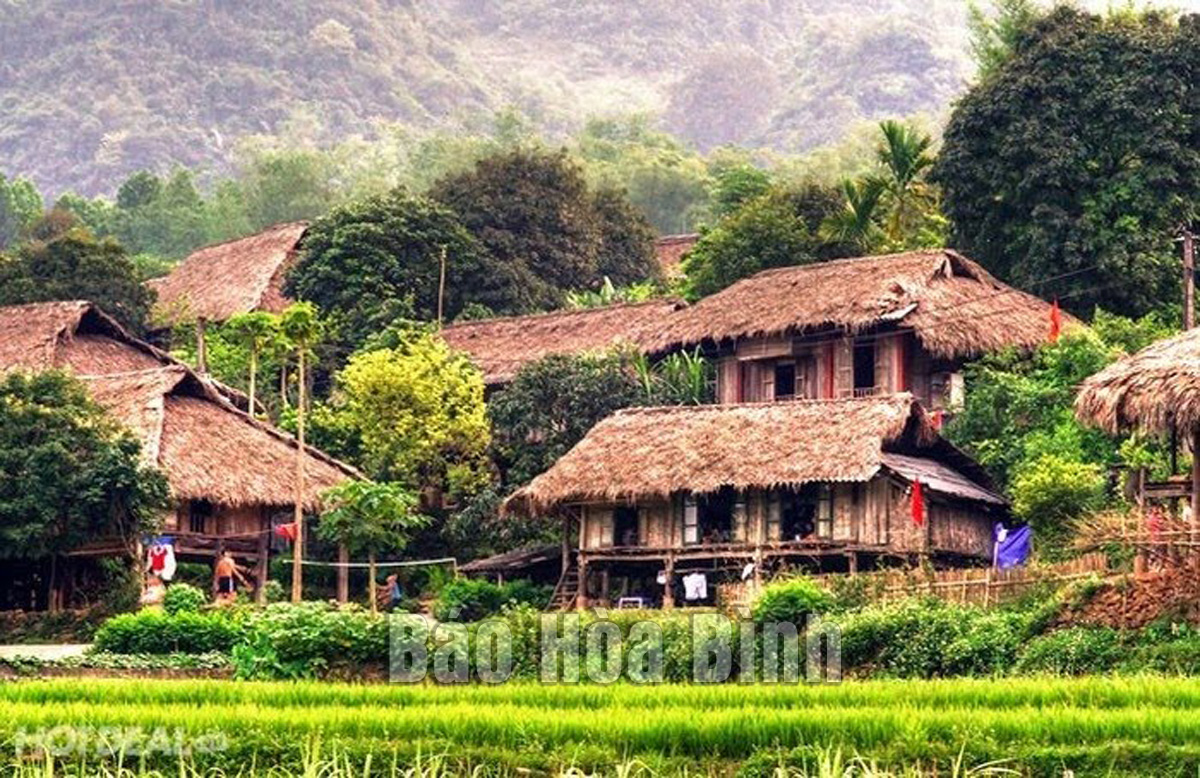(HBO) - Traveling to Cao Phong for the first time, but Ms. Phan Thuy Quynh from Hanoi’s Dong Anh district was completely captivated by the peaceful beauty of the land.
Mo village - a community tourist site that
should not be missed during trip to Cao Phong district.
As the Lunar New Year approaches, more and more
people like Quynh are eager to come to Cao Phong, both to discover attractive
tourist attractions and to buy Cao Phong orange - the specialty product of the
beautiful land.
Besides the orange growing area, Thung Nai and
Binh Than communes in Cao Phong district are also attractive areas for
tourists.
About 10 km from the centre of Hoa Binh city,
the road running along Binh Thanh commune will bring visitors to Mo hamlet -
the most famous community tourism village of the district, which is also a
cultural highlight of the Muong land in Hoa Binh.
Stilt houses, terraced fields, vegetable gardens
are vivid motifs that adorn a peaceful life rhythm in the village.
Leaving Mo village, going in the opposite
direction to Thung Nai, visitors will arrive at Thung Nai wharf - the starting
point for a journey to discover ecotourism areas located in theHoa Binh
Lake national tourist site, which is called "Ha Long bayon the
mountain.
It takes about 20 minutes by boat to reach Thac
Bo Temple area from Thung Nai tourist port. This is not only a charming place
with forests, islands, a cool climate all year round, but also is home to
villages of ethnic minority groups.
There are many historical sites with cultural
and spiritual values in the riverbed area such as Bo, Co, Cau temples, and King
Le's stele.
Leaving the Bo Temple, visitors can in turn
visit other attractive tourist sites such as Ngoc and Qua islands, and Giang
waterfall, which have helped create an attractive tourist complex in the lake
area.
Cao Phong district boasts three national
culturalandhistoricalrelic sites that were recognized by the Ministry
of Culture, Sports and Tourism, and one provincial historical and cultural
ones.
In recent years, the district’s authorities have
paid special attention to developing tourism with important solutions such
prioritising the use of land fund for tourism development, promoting land
clearance, creating favourable conditions for investors, and encouraging
development of "green” tourism models.
With its efforts to synchronously deploy
mechanisms and policies to attract investment for tourism development, the
district has initially developed diverse tourism products and attractive
destinations, such as theHeritage Park of Vietnamese
scientistsinTieng hamlet inBac Phong commune; the
complexof caves on Dau Rong Mountain; ThuongBong Laitemple in
Cao Phong township; and Mo village in Binh Thanh commune./.



